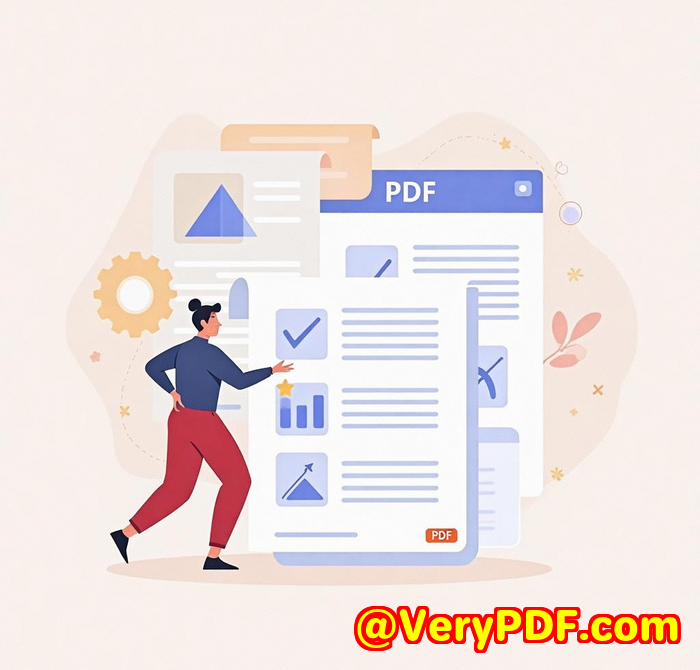How to Maximize ROI by Using VeryPDF JavaScript PDF Annotator Source Code License in Your Software Products
Every time I onboard a new client who needs real-time document collaboration inside their platform, it’s the same set of questions.

“How do we let users add comments directly on PDFs?”
“Can we highlight stuff without forcing downloads?”
“Can this run on mobile, desktop, and just… work?”
That’s exactly the rabbit hole I went down before finding the VeryPDF JavaScript PDF Annotator Source Code License.
I’d used annotation tools before. But most were locked into one OS, needed clunky browser plugins, or forced my users to jump through hoops. None really fit what I neededfull control, full integration, and zero fuss.
This tool changed the game
I came across the VeryPDF JavaScript HTML5 PDF Annotator while looking for a client-side solution that would allow us to let users annotate documents directly in the browserno plugins, no downloads, no compromise.
Here’s the kicker: this thing isn’t just a viewer. It’s a full-blown annotation toolkit that handles PDFs, Word docs, images, CAD drawings, and about 50 other file types. It runs natively in Chrome, Firefox, Safari, Edge… even on iOS and Android.
And with the source code license, I could drop it straight into our own SaaS platform.
Here’s what stood out
Let me walk you through a few features that actually moved the needle for us:
Annotation Tools That Just Work
-
Text, highlight, freehand, strikeout, shapeseverything you’d expect
-
Point, area, and text comments with layer-based collaboration
-
Burn annotations into final files or let users remove/edit as needed
-
Cross-user collaboration with visible markups
I tested this with a legal tech client who needed multiple paralegals marking up contracts in real time. They were able to comment, revise, and finalise docs without a single PDF download.
Seamless Integration with Our Backend
This wasn’t some Frankenstein plugin. It’s pure HTML5 + JavaScript, so I wired it into our app using its REST API, connected it to our Node.js backend, and had it up in less than a day.
Bonus: it runs smooth on both Windows and Linux servers.
Keeps Your File Integrity Intact
This was big. Unlike tools that overwrite the original file, this one maintains the source untouched unless you explicitly choose to burn in the annotations.
That level of control matters when working in finance, legal, or enterprise IT.
What makes this different?
Other tools I tried either:
-
Locked me into their ecosystem
-
Had limited format support
-
Were buggy on mobile
-
Or didn’t let me white-label/customise them
VeryPDF’s solution hit the sweet spot. Clean UI. Fast rendering. And total flexibility with how you want to implement and deploy it.
We used this for:
-
Internal HR platforms managing staff records
-
Legal case management platforms
-
Image annotation for design workflows
-
PDF collaboration in education tech
-
Enterprise documentation tools
Wherever annotation was needed, we embedded it. Zero complaints.
TL;DR
If you’re building a product where your users interact with documentsPDFs, Word files, imagesyou need annotation.
And if you want complete control and ROI you can actually measure, the VeryPDF JavaScript PDF Annotator Source Code License is a no-brainer.
I’d recommend this to developers, SaaS founders, IT leads, or literally anyone who needs reliable, cross-platform document annotation without the bloat.
Try it out here:
https://veryutils.com/html5-pdf-annotation-source-code-license
Custom Development Services by VeryPDF
If you need something more tailored, VeryPDF also offers custom development. I’ve worked with them on other projectsthey know their stuff.
Whether it’s PDF processing for Linux, integrating a virtual printer driver, or building out OCR tools that read scanned contracts and turn them into datayou’re covered.
They’ve built solutions in:
-
Python, PHP, C++, JavaScript, C#
-
Windows, macOS, Linux, Android, iOS
-
PDF to image, EMF, Postscript conversion
-
OCR, table recognition, barcode extraction
-
PDF security, digital signatures, DRM
Need a special hook into the Windows API? They can do that too. Or maybe you need to monitor print jobs and convert them to searchable PDFs on the fly. Yep, they’ve done that as well.
Reach out here: http://support.verypdf.com/
FAQs
Q1: Can I integrate this with my own database and backend?
Yes, it uses REST APIs, so you can connect it with your system and control the logic.
Q2: Does it work on mobile browsers?
Absolutely. It’s HTML5 and JavaScript-based, so it works across Android and iOS without any plugins.
Q3: What file types does it support?
Over 50, including PDFs, Word docs, Excel, PowerPoint, images (JPG, TIFF, PNG), CAD drawings, and more.
Q4: Can I customise the annotation toolbar?
Yes, with the source code license, you can tweak the interface, features, and flow to suit your app.
Q5: Is there an online demo?
Yep. You can try it live here: Try the demo
Tags / Keywords
-
JavaScript PDF annotation
-
HTML5 PDF annotator source code
-
PDF annotation API
-
Document collaboration SDK
-
VeryPDF source code license